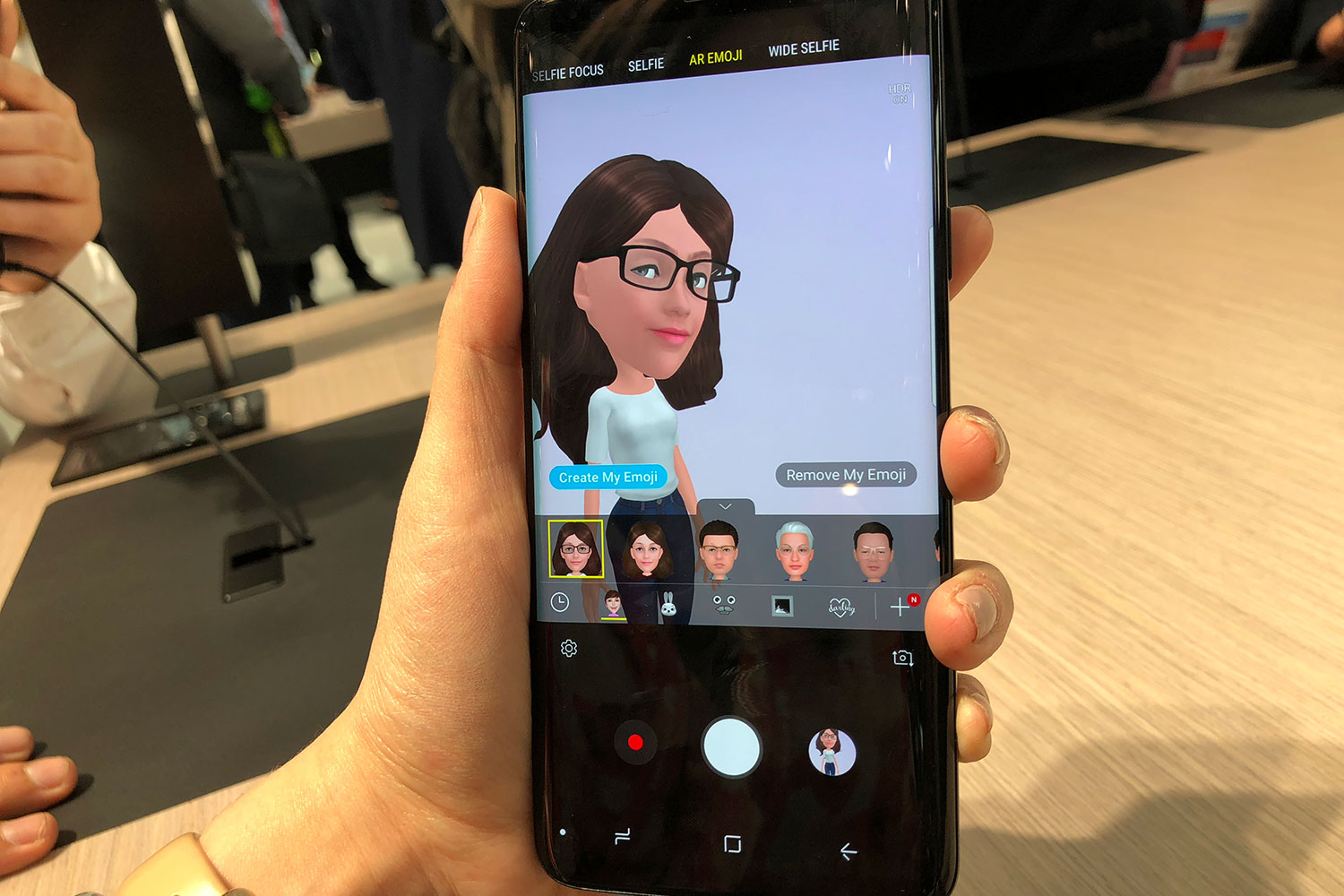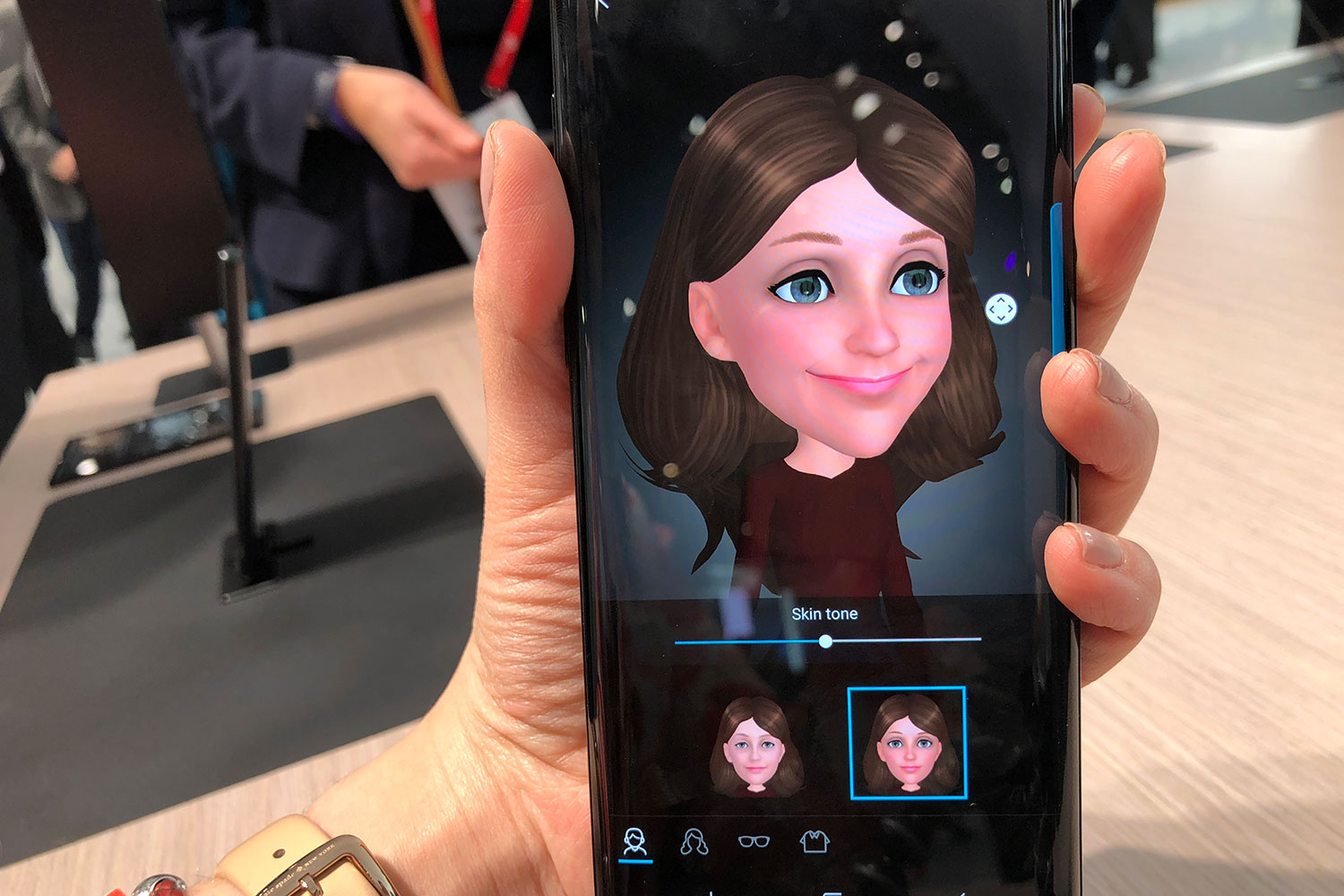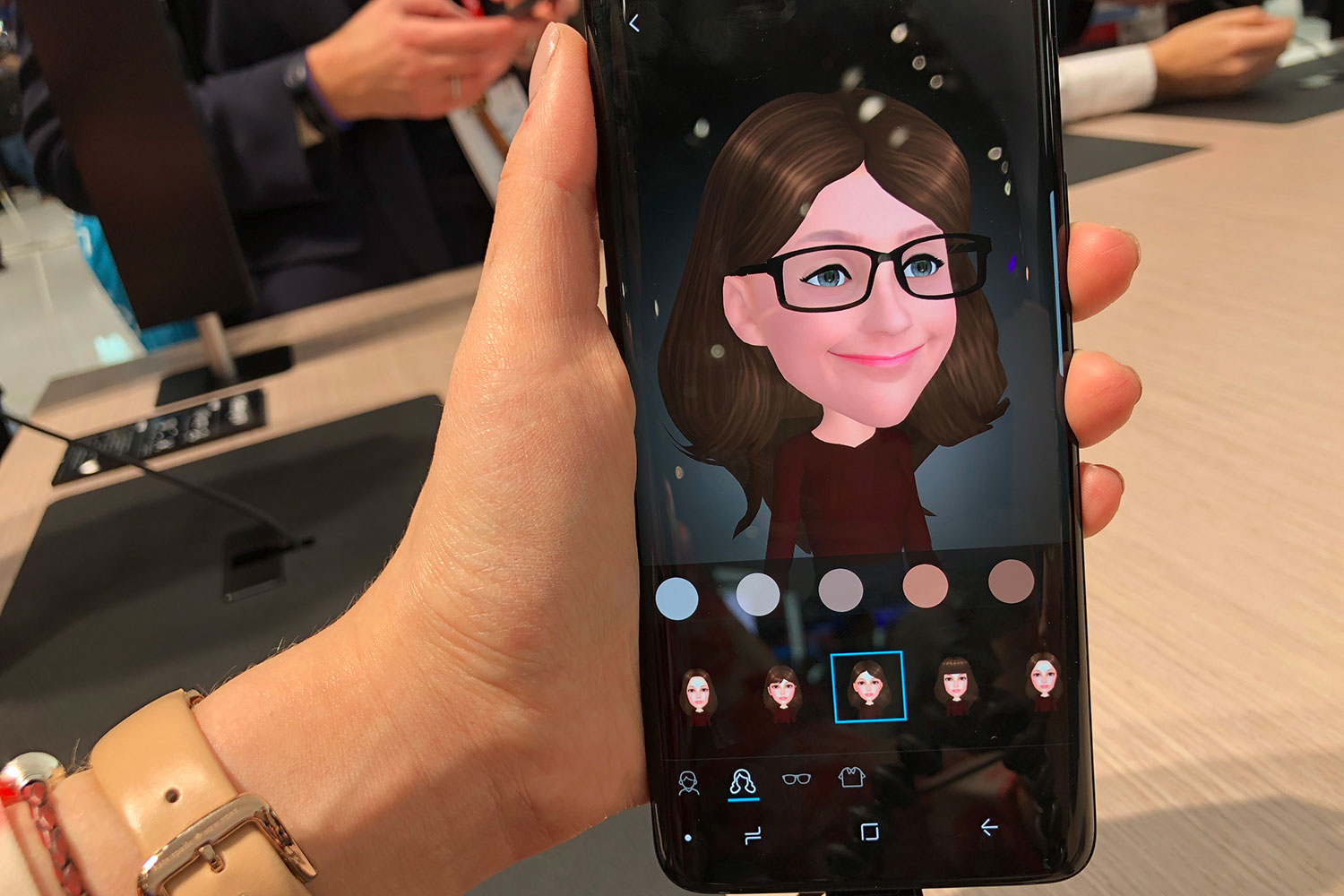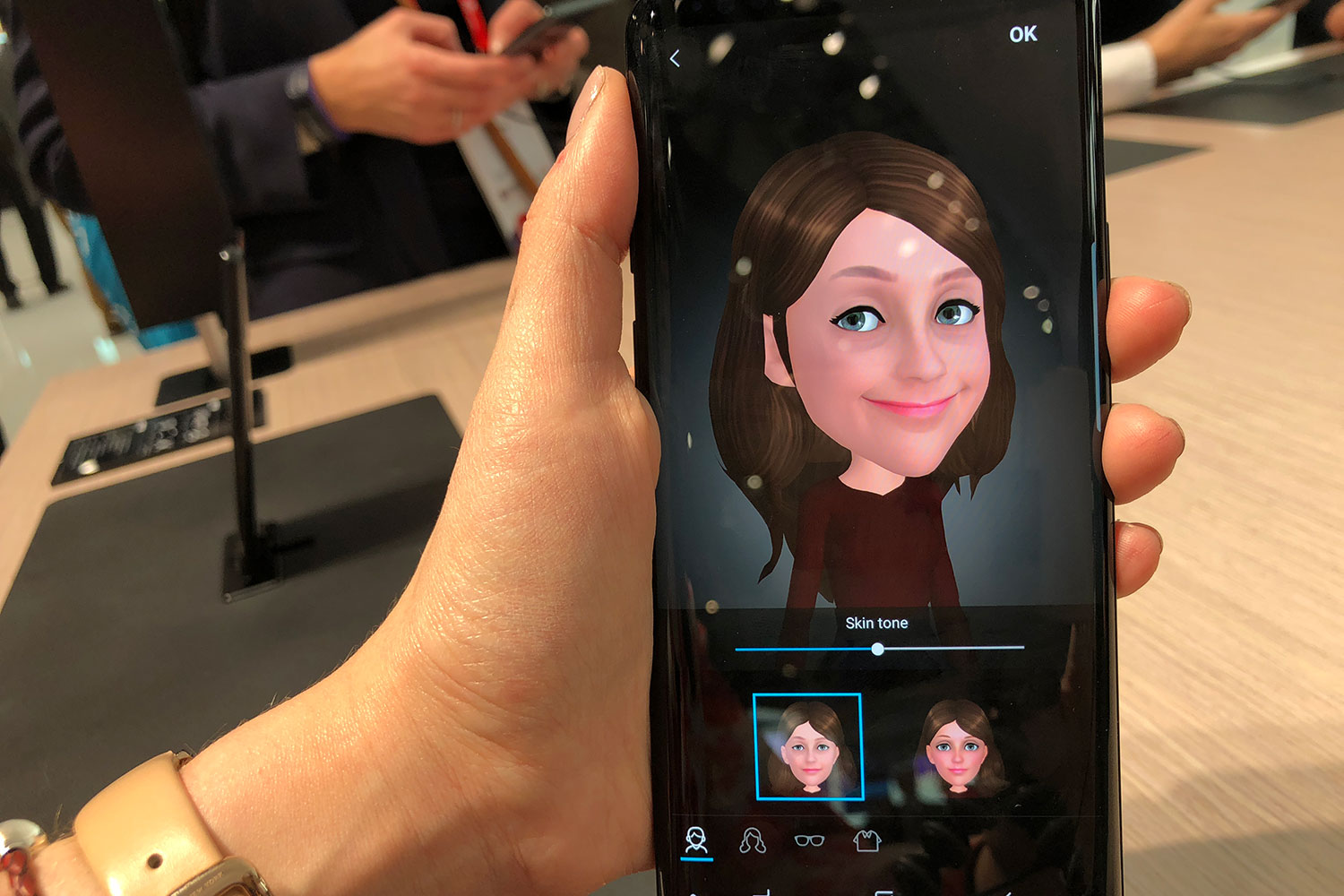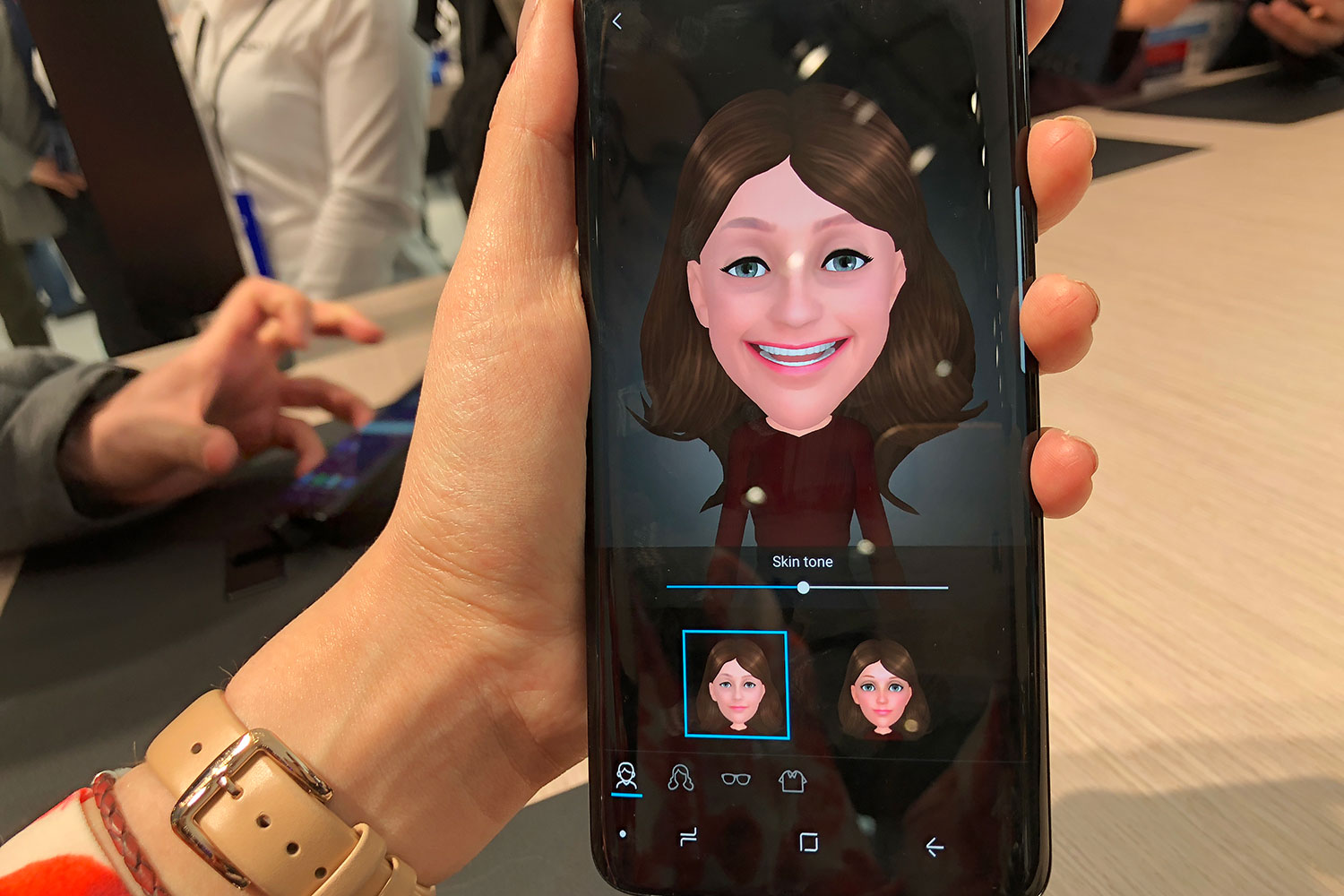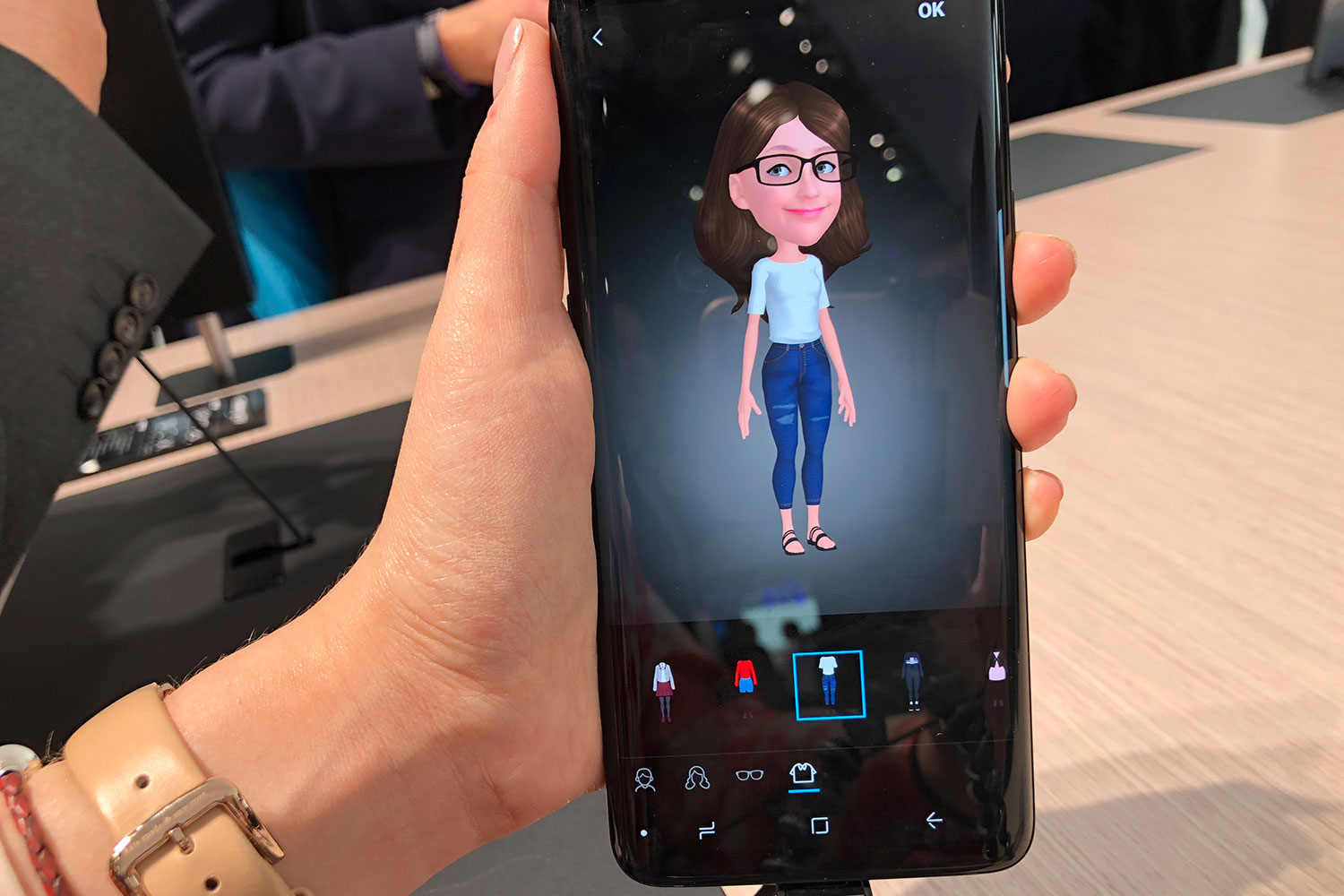The first time I created my own AR Emoji, I was on Facebook Live. Judging by the mostly negative reactions from the media, I braced myself for the horror of the ugly animated character ready to appear on the 6.2-inch display of Samsung’s new Galaxy S9 Plus – with an audience watching along. To my surprise, I loved the way it turned out.
With Samsung’s AR Emoji, you’re able to create Jimmy Neutron-esque emojis of yourself that capture and mirror your facial movements, similar to the motion-capture capabilities of Apple’s Animojis on the iPhone X. The new feature is available on the Galaxy S9 and S9 Plus, directly in the camera app by swiping to the “AR Emoji” tab. Once it makes an emoji out of you, you can either make a video as the emoji character, or use it as an animated sticker pack in various messaging apps.
AR Emoji is stripped down to only the essentials.
Samsung’s clearly following Apple here, and I think AR Emojis look like a cross between Animoji and Snap’s Bitmojis, I was hesitant to create mine — ever since the release of Bitmoji Deluxe, I’ve slowly been stepping away from my Bitmojis and cartoon avatars in general. After the updated Snap app started offering an influx of customization options to choose from, I realized it made me start to over analyze how I looked. I obsessed about whether or not it looked realistic enough to send to other people.
Before trying Samsung’s method out, I assumed it was yet another feature that would force us to sit on our phones and try to pinpoint precise facial features. But I was pleasantly surprised. AR Emoji is stripped down to only the essentials – skin tone, hairstyle and hair color, outfits, and the option to add in glasses.
Even though I can’t make in-depth edits to the size of my eyes or the shape of my chin, I was able to make minor improvements – and that’s the best part. By simplifying the process, I got to have fun again. All it took was a photo, a few adjustments, and I had a 3D version of myself that I could send out in the form of regular emojis and GIFs, all integrated right into my keyboard. I wasn’t obsessed with tweaking it.
While some of my co-workers said their animations looked nothing like them, I did notice mine captured some distinguishing features. The natural dark circles under my eyes and the shape of my eyebrows were accurate. Yes, my head was three times the size and my eyeballs were slightly larger than normal, but it made me look the way a cartoon version of me should – quirky.
Even in a virtual world where the imagination has no boundaries, users are encouraged to represent themselves realistically.
To add to the list of apps that encourage us to depict ourselves realistically, Sony launched its Xperia XZ2 with an app that allows us to take 3D portraits with the front-facing camera. That means you’ll be able to snap 3D models of your face and post them to Facebook or use it as an avatar in a video game (or maybe even 3D print it). Even in a virtual world where the imagination has no boundaries, users are encouraged to represent themselves realistically.
I’m happy with Samsung’s AR Emoji, especially because it reminds me not to take everything so seriously. Regardless of the whether the emojis are accurate or not, it’s all good, lighthearted fun.
Samsung will most likely tweak AR Emojis in a future software update, but I hope it’ll still keep the option to stick with the cartoonish caricature. It’s ironic that in a social media culture where we edit and curate our content, our AR Emojis have to look exactly like us. With tons of filters at our disposal on Instagram and Snapchat, it’s rare we post anything without one. It’s tough to criticize tools like AR Emoji for not portraying us accurately when our own photographs don’t either.
